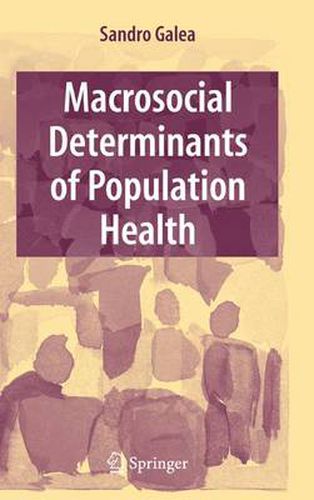Readings Newsletter
Become a Readings Member to make your shopping experience even easier.
Sign in or sign up for free!
You’re not far away from qualifying for FREE standard shipping within Australia
You’ve qualified for FREE standard shipping within Australia
The cart is loading…






This title is printed to order. This book may have been self-published. If so, we cannot guarantee the quality of the content. In the main most books will have gone through the editing process however some may not. We therefore suggest that you be aware of this before ordering this book. If in doubt check either the author or publisher’s details as we are unable to accept any returns unless they are faulty. Please contact us if you have any questions.
This book explores social factors such as culture, mass media, political systems, and migration that influence public health while systematically considering how we may best study these factors and use our knowledge from this study to guide public health interventions. Throughout, contributors emphasize the potential of population strategies to influence traditional risk factors associated with health and disease. Each section ends with Galea’s integrative chapters, bringing the observations and conclusions from the chapters into clear, usable focus.
$9.00 standard shipping within Australia
FREE standard shipping within Australia for orders over $100.00
Express & International shipping calculated at checkout
This title is printed to order. This book may have been self-published. If so, we cannot guarantee the quality of the content. In the main most books will have gone through the editing process however some may not. We therefore suggest that you be aware of this before ordering this book. If in doubt check either the author or publisher’s details as we are unable to accept any returns unless they are faulty. Please contact us if you have any questions.
This book explores social factors such as culture, mass media, political systems, and migration that influence public health while systematically considering how we may best study these factors and use our knowledge from this study to guide public health interventions. Throughout, contributors emphasize the potential of population strategies to influence traditional risk factors associated with health and disease. Each section ends with Galea’s integrative chapters, bringing the observations and conclusions from the chapters into clear, usable focus.